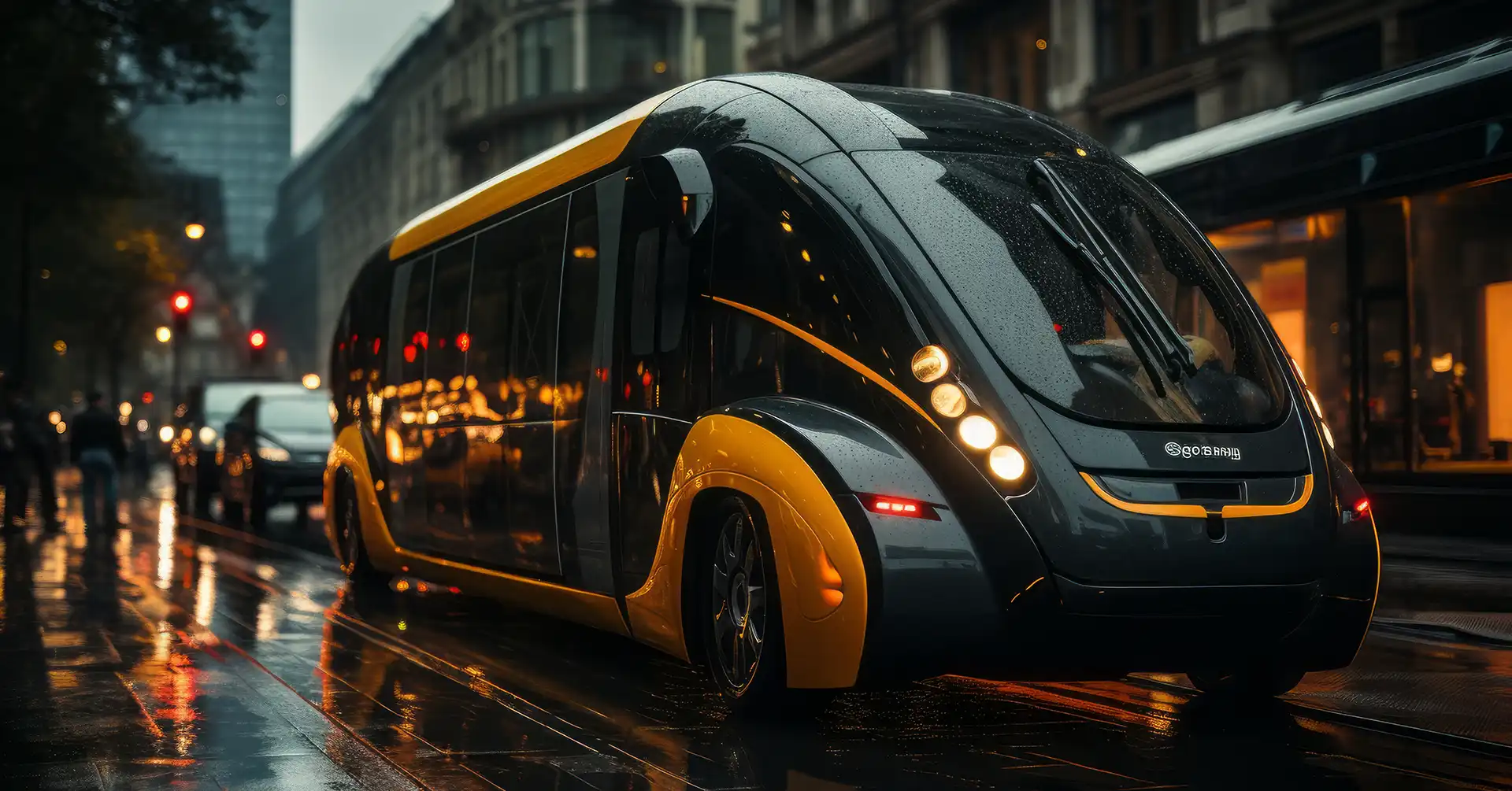Hello, my wonderful readers! Self driving cars, once the stuff of science fiction, have rapidly evolved into a groundbreaking reality, revolutionizing the automotive industry. This blog delves into the fascinating journey of self driving cars and their remarkable evolution.
From the early experiments in the field of autonomous vehicles to the cutting-edge technologies driving the current wave of innovation, this exploration aims to provide a comprehensive understanding of the advancements that have propelled self driving cars into the mainstream. The blog will navigate through the pivotal moments, breakthroughs, and challenges that have shaped the trajectory of self-driving technology.
As we embark on this journey, we will unravel the intricate web of sensors, artificial intelligence, and connectivity that form the backbone of autonomous vehicles. From the prototypes to the present-day fleet of semi-autonomous and fully autonomous cars, each chapter in this evolution has contributed to a transformative shift in how we perceive transportation.
Join us as we unravel the intricacies of self driving cars, exploring their past, present, and the exciting future that awaits as technology continues to propel us toward a new era of mobility. Fasten your seatbelts as we take you on a riveting ride through the captivating evolution of self driving cars.
Latest Advancements on Self Driving Cars
In recent years, self driving cars have witnessed unprecedented advancements, propelling the automotive industry into a new era of innovation. Cutting-edge technologies are shaping the landscape of autonomous vehicles, revolutionizing transportation as we know it.
One of the key breakthroughs involves advancements in sensor technology. High-resolution cameras, LiDAR (Light Detection and Ranging), and radar systems have become increasingly sophisticated, enhancing a self-driving car’s ability to perceive its surroundings with remarkable precision. These sensors work collaboratively to create a comprehensive and real-time map of the vehicle’s environment, enabling it to navigate complex scenarios.
Artificial intelligence (AI) is pivotal in the latest self-driving car advancements. Machine learning algorithms analyze vast amounts of data, learning from diverse driving situations to improve decision-making capabilities. This adaptive AI allows self driving cars to continuously enhance performance, adapting to ever-changing road conditions and unexpected obstacles.
Connectivity is another critical aspect of recent advancements. self driving cars are increasingly integrated into smart city infrastructures, leveraging real-time data from traffic signals, road signs, and other vehicles. This interconnected ecosystem enhances overall safety and efficiency by enabling cars to communicate with each other and the surrounding infrastructure.
Moreover, advancements in mapping technologies, including high-definition mapping and real-time updates, contribute to self-driving systems’ overall reliability and accuracy. These maps provide detailed information about road geometry, traffic conditions, and potential hazards, allowing autonomous vehicles to make informed decisions in dynamic environments.
The latest advancements in self driving cars encompass a synergy of cutting-edge sensor technologies, artificial intelligence, and seamless connectivity. These breakthroughs bring us closer to achieving fully autonomous driving and set the stage for a future where transportation is safer, more efficient, and remarkably intelligent.
Latest Companies who work on Self Driving Cars
Several leading companies are at the forefront of developing self-driving car technology, driving the industry’s evolution and pushing the boundaries of autonomous transportation. The following details highlight some of the latest companies actively shaping the future of self driving cars.
Tesla:
Under Elon Musk’s leadership, Tesla has been a trailblazer in the autonomous driving space. Their vehicles are equipped with advanced driver-assistance features through the Autopilot system. Tesla’s approach involves regular over-the-air updates, continually improving the self-driving capabilities of their vehicles.
Waymo:
Waymo, a subsidiary of Alphabet Inc. (Google’s parent company), is recognized as a leader in autonomous technology. Waymo has developed a sophisticated self-driving platform and has been conducting extensive real-world testing. The company has even launched a commercial self-driving ride-hailing service, offering a glimpse into the future of autonomous mobility.
Uber ATG:
Uber’s Advanced Technologies Group (ATG) is dedicated to developing self-driving technology for ride-sharing. While Uber initially faced setbacks, the company remains committed to autonomous driving and invests in research and development. The goal is to enhance safety and efficiency in their ride-sharing services.
General Motors (GM):
GM has been actively involved in autonomous vehicle development through its Cruise Automation subsidiary. Cruise has been testing autonomous vehicles extensively and has received significant investments to further its research and development efforts. GM envisions a future where self-driving technology is central to urban mobility.
NVIDIA:
NVIDIA, primarily known for its graphics processing units (GPUs), has also become a major player in the autonomous driving space. Their hardware and software solutions are crucial components in the development of self-driving technology, providing the computing power necessary for complex AI algorithms used in autonomous vehicles.
Aurora:
Aurora is an autonomous vehicle technology company focused on developing a full-stack solution for self driving cars. Founded by industry veterans, including former executives from Google, Tesla, and Uber, Aurora is working on creating a safe and efficient autonomous driving platform.
These companies, among others, are at the forefront of self-driving car innovation. Their ongoing research, development, and testing efforts contribute significantly to the advancement of autonomous vehicle technology, shaping the future of transportation.
Features of the New Self-Driving Cars
The new generation of self-driving cars boasts many cutting-edge features that redefine the driving experience. These advancements not only enhance convenience but also prioritize safety and efficiency. Here, we delve into the notable features that characterize these futuristic vehicles:
Advanced Sensor Systems:
State-of-the-art self driving cars have various sensors, including LiDAR, radar, and high-resolution cameras. These sensors work collaboratively to provide a comprehensive and real-time view of the vehicle’s surroundings, enabling precise navigation and the ability to detect and respond to potential obstacles.
Artificial Intelligence (AI) Integration:
AI plays a central role in the functionality of self driving cars. Machine learning algorithms continuously analyze data from sensors and past driving experiences, allowing the vehicle to make real-time decisions. This adaptability ensures that the car can navigate diverse and complex driving scenarios with high autonomy.
Autonomous Driving Modes:
The latest self driving cars often come with multiple driving modes, allowing users to choose the level of autonomy they desire. These options cater to different preferences and comfort levels, from basic driver-assistance features to fully autonomous modes.
Enhanced Connectivity:
Connectivity features enable self driving cars to communicate with each other and with smart city infrastructures. Real-time updates from traffic signals, road signs, and other vehicles contribute to safer and more efficient navigation. Additionally, over-the-air updates keep the vehicle’s software current with the latest improvements.
High-Definition Mapping:
Integrating high-definition maps provides self driving cars with detailed information about road geometry, traffic conditions, and points of interest. This mapping technology enhances the accuracy of the vehicle’s navigation system, contributing to a smoother and more reliable driving experience.
Driver Monitoring Systems:
Many self driving cars incorporate driver monitoring systems to ensure safety during the transition between manual and autonomous driving. These systems use cameras and sensors to track the driver’s attention and intervene if necessary, ensuring a seamless handover of control.
Energy-Efficient Design:
New self driving cars often feature energy-efficient designs, including electric or hybrid propulsion systems. These eco-friendly choices align with the industry’s commitment to sustainability and contribute to reduced environmental impact.
Enhanced Safety Features:
Safety remains a top priority, and self driving cars have advanced safety features such as collision avoidance systems, automatic emergency braking, and adaptive cruise control. These features work together to mitigate potential risks and enhance overall road safety.
As self-driving technology advances, these vehicles’ features evolve, offering users an increasingly sophisticated and integrated driving experience. From advanced AI capabilities to connectivity and safety enhancements, the new era of self driving cars is transforming how we perceive and interact with automotive technology.
Self Driving Buses
Self-driving buses represent a groundbreaking leap in autonomous transportation, heralding a new era of mobility beyond individual vehicles. These buses, equipped with cutting-edge technology, are at the forefront of revolutionizing public transportation. Here are the key details highlighting the features and advancements in self-driving buses:
Autonomous Navigation Systems:
To perceive their surroundings, self-driving buses integrate advanced navigation systems, including LiDAR, radar, and cameras. These systems enable the buses to detect obstacles, pedestrians, and other vehicles in real time, ensuring safe and precise navigation.
Artificial Intelligence (AI) for Decision-Making:
The AI algorithms in self-driving buses analyze data from sensors, learning and adapting to various traffic scenarios. This capability empowers the buses to make informed decisions, navigate complex routes, and respond dynamically to environmental changes.
Connectivity for Efficient Fleet Management:
Self-driving buses often operate within a connected ecosystem, allowing them to communicate with each other and a centralized control system. This connectivity streamlines fleet management, optimizing routes, reducing congestion, and enhancing overall efficiency.
Enhanced Safety Features:
Safety remains a paramount concern, and self-driving buses are equipped with advanced safety features such as collision avoidance systems, emergency braking, and comprehensive monitoring of their surroundings. These features ensure a high level of safety for passengers and pedestrians alike.
User-Friendly Interfaces:
Self-driving buses prioritize user experience with intuitive interfaces for passengers. Touchscreen displays, real-time route information, and user-friendly controls provide a seamless and enjoyable commuting experience.
Sustainability with Electric Propulsion:
Many self-driving buses adopt electric or hybrid propulsion systems, aligning with sustainability goals. These eco-friendly choices contribute to reduced emissions, making autonomous buses a green alternative for urban transportation.
Accessibility Features:
Accessibility is a key focus in the design of self-driving buses. Innovations such as automated ramps, spacious interiors, and user-friendly boarding mechanisms ensure that the buses cater to the needs of diverse passenger demographics, including those with mobility challenges.
Continuous Improvement through Updates:
Like self driving cars, these buses often receive over-the-air updates to improve their software and operational capabilities. This ensures that the technology remains up-to-date and evolves with advancements in autonomous systems.
The advent of self-driving buses not only transforms the public transportation landscape but also holds the potential to address urban mobility challenges. As these autonomous buses become an integral part of smart cities, they contribute to a future where public transportation is efficient, sustainable, safer, and more accessible for everyone.
Related Searches
- self driving car
- uk bus
- alfa self drive
- edinburgh buses
Conclusion
The evolution of self-driving cars represents a remarkable journey that transcends the realm of automotive innovation. From the early aspirations of autonomous mobility to the present reality of sophisticated self-driving technologies, the trajectory of this evolution has been nothing short of revolutionary.
As we reflect on the path traversed, it becomes clear that self-driving cars are no longer a distant vision but a tangible force shaping the future of transportation. The fusion of advanced sensors, artificial intelligence, and connectivity has propelled these vehicles from experimental prototypes to the forefront of the automotive industry. The narrative of self-driving cars is a testament to human ingenuity, determination, and the relentless pursuit of a safer and more efficient mode of transportation.
Looking ahead, the journey continues into uncharted territories, promising further advancements and societal transformations. The evolution of self-driving cars is not merely a technological narrative; it is a story of collaboration, adaptation, and the unwavering belief in the potential to redefine how we move and interact with our world.
In this unfolding narrative, the road ahead promises continued innovation, improved safety, and a transportation landscape where self-driving cars seamlessly coexist with traditional vehicles. As we embrace this evolution, we embark on a journey toward a future where self-driving cars play a central role in shaping a more connected, efficient, and sustainable world.
Also Read:






